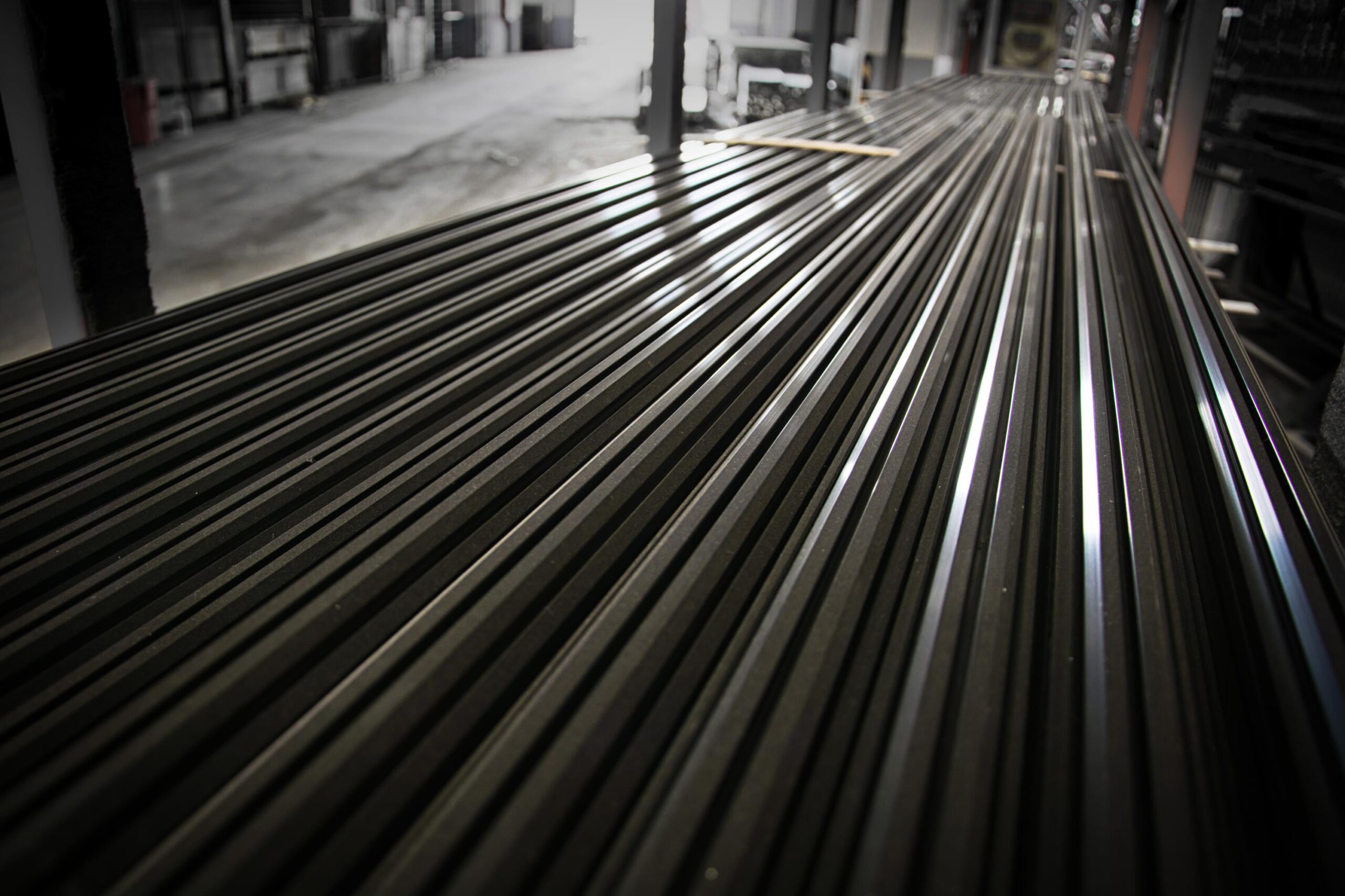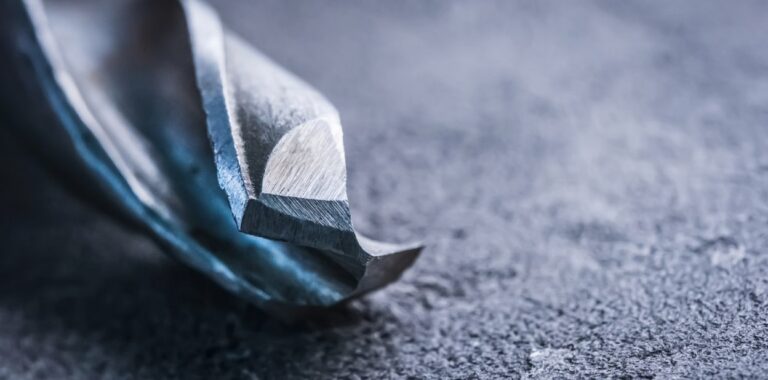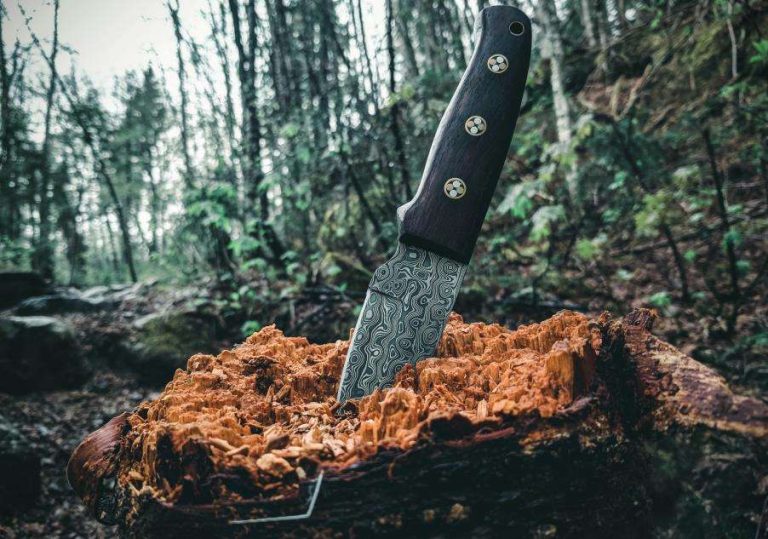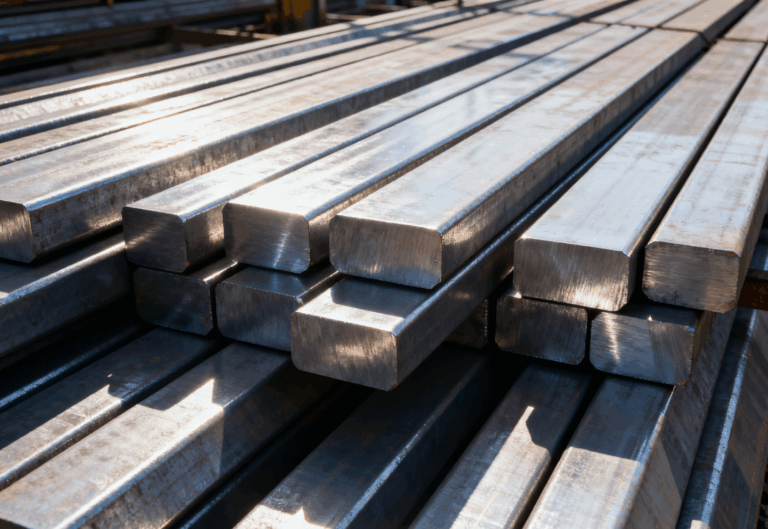If you’re in the knife industry—whether a wholesaler, retailer, or brand owner sourcing from China—understanding martensitic stainless steel is critical to choosing the right material for your products. This steel category stands out for its unique combination of hardness, corrosion resistance, and durability, making it a top choice for many knife applications. Below, we break down everything about martensitic stainless steel. Let’ dive in!
What Is Martensitic Stainless Steel?
Martensitic stainless steel is a type of stainless steel characterized by its martensitic crystal structure, formed through a heat treatment process called quenching (rapid cooling from high temperatures) and tempering (reheating to reduce brittleness). Unlike austenitic or ferritic stainless steels (which are non-heat-treatable), martensitic grades can be hardened to achieve exceptional strength and edge retention—key traits for knives and cutting tools.
It sits in the broader stainless steel family, defined by a minimum chromium content of 10.5% (the element that delivers corrosion resistance) and varying levels of carbon (for hardness) and other alloying elements. Its ability to be heat-treated makes it versatile for applications where both durability and resistance to rust are non-negotiable.
Buy Wholesale Knives and Start Scaling up with Us Today
Contact us and connect with a sales rep to get a free quote.
Is Martensitic Stainless Steel Good for Knives?
Yes—martensitic stainless steel is one of the best materials for knives, especially for applications where edge retention and rust resistance are equally important. Here’s why it’s a top choice for different knife types:
- Kitchen Knives (Chef’s Knives, Paring Knives): 440C, 420HC, and 14C28N offer the right mix of sharpness, corrosion resistance (to food acids), and easy cleaning.
- Outdoor Knives (Hunting Knives, Camping Knives): 440B, 3Cr13, and H1 steel handle moisture, dirt, and light impacts without rusting.
- Tactical/EDC Knives: 440C and 9Cr18 deliver maximum wear resistance for daily use and harsh conditions.
- Specialty Knives (Diving Knives, Medical Scissors): H1 steel and 440A resist saltwater and sterilization chemicals, ensuring longevity.
For most knife brands and wholesalers, martensitic stainless steel hits the “sweet spot” of performance, cost, and user-friend
Properties & Composition of Martensitic Stainless Steel
Key Properties
| Property | Description | Typical Range / Example |
| High Hardness | Achieves 50–62 HRC after heat treatment — ideal for knife blades that require long-lasting sharpness. | 50 – 62 HRC (Rockwell C) |
| Good Corrosion Resistance | 10.5–18% Cr provides decent rust resistance — better than carbon steel, though lower than austenitic grades (e.g., 304). | Chromium 10.5–18% |
| Moderate Toughness | Balances hardness and flexibility to avoid chipping — suitable for kitchen and outdoor knives. | Medium |
| Heat-Treatable | Can be quenched and tempered to adjust hardness/toughness for different knife types. | Customizable |
| Easy Sharpening | Easier to re-sharpen than most high-carbon or powder steels — low maintenance for users. | High sharpenability |
Typical Composition
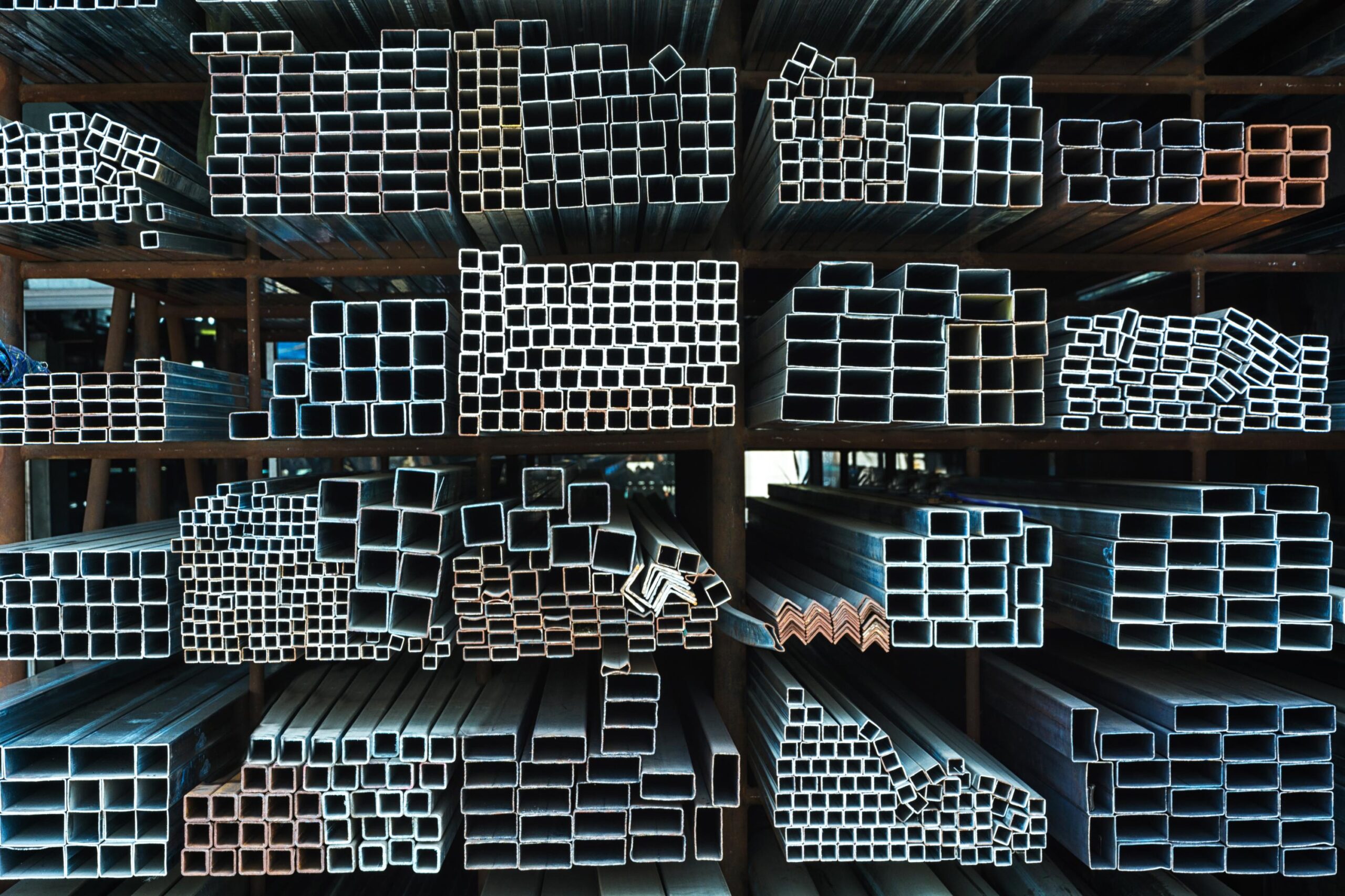
| Element | Typical Range (%) | Function / Effect |
|---|---|---|
| Chromium (Cr) | 10.5 – 18 % | Provides corrosion and oxidation resistance. |
| Carbon (C) | 0.15 – 1.20 % | Controls hardness and strength (higher C = harder steel). |
| Molybdenum (Mo) | 0.2 – 1.0 % (optional) | Improves pitting corrosion resistance and adds strength. |
| Nickel (Ni) | 0 – 4 % (optional) | Increases toughness and ductility. |
| Vanadium (V) | 0.1 – 0.5 % (optional) | Enhances wear resistance and grain refinement. |
| Iron (Fe) | Balance | Base metal forming the bulk of the alloy. |
Buy Wholesale Knives and Start Scaling up with Us Today
Contact us and connect with a sales rep to get a free quote.
Common Types of Martensitic Stainless Steel for Knives
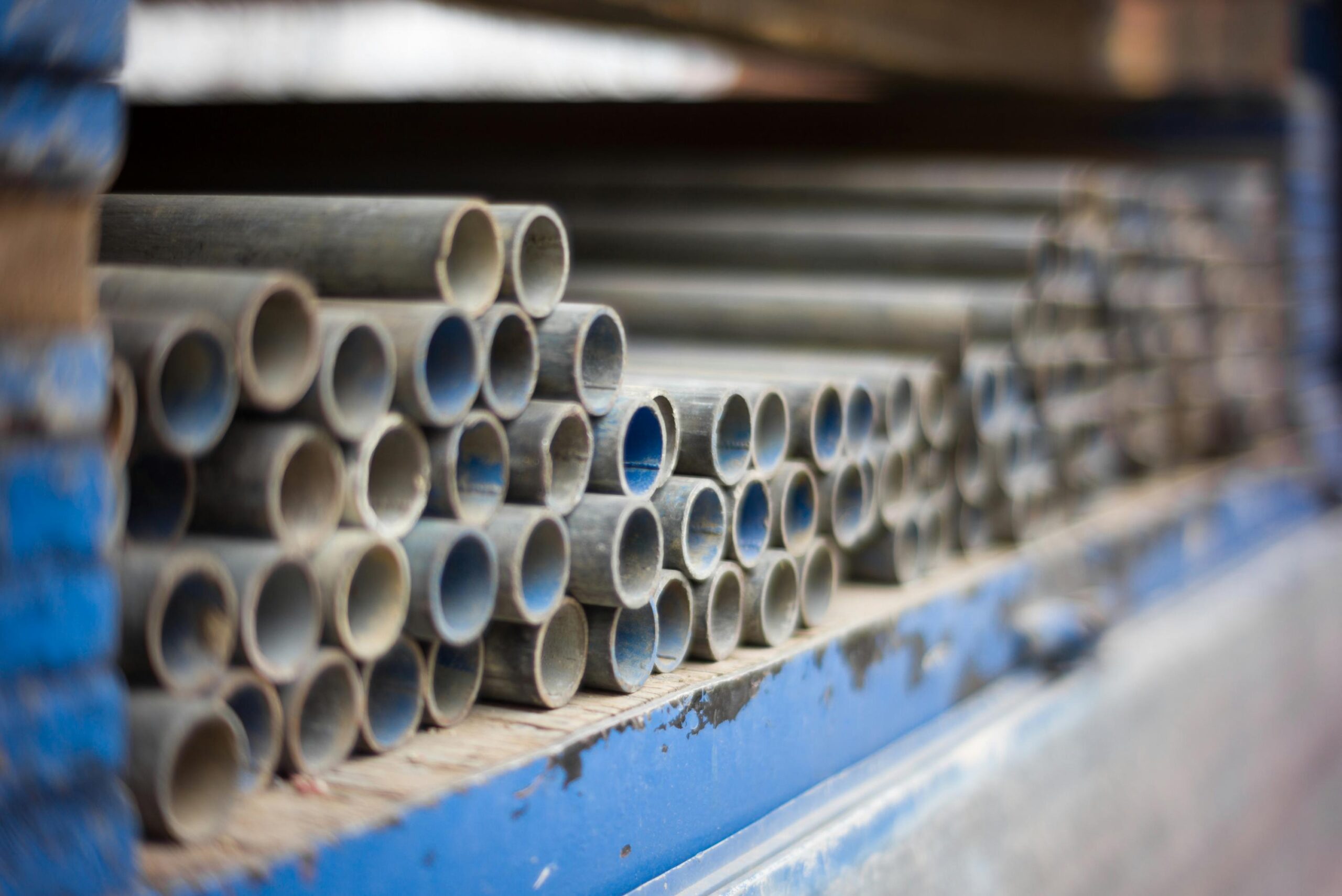
Not all martensitic stainless steels are the same. Below are the most popular grades for knife manufacturing, each optimized for specific use cases:
440 Series
- 440A: Lowest carbon (0.6–0.75%), best corrosion resistance in the series. Ideal for kitchen knives, pocket knives, and diving knives (resists saltwater).
- 440B: Medium carbon (0.75–0.95%), higher hardness (56–58 HRC) than 440A. Used for utility knives and hunting blades.
- 440C: Highest carbon (0.95–1.2%), maximum hardness (58–60 HRC) and wear resistance. Perfect for high-performance knives (e.g., chef’s knives, tactical blades).
420 Series
- 420J1/J2: Low carbon (0.15–0.4%), excellent corrosion resistance. Great for budget-friendly kitchen knives, scissors, and medical tools (e.g., surgical scissors).
- 420HC (High Carbon): Carbon increased to 0.4–0.5%, boosting hardness (54–56 HRC). A favorite for everyday carry (EDC) knives and entry-level hunting blades.
Cr13 Series
- 1Cr13/2Cr13: Low carbon (0.15–0.3%), high ductility. Used for low-cost utility knives and non-critical cutting tools.
- 3Cr13: Carbon up to 0.35%, hardness 52–54 HRC. Common in budget kitchen knives and outdoor camping knives.
- 9Cr18: High carbon (0.9–1.0%) and chromium (17–19%), exceptional corrosion resistance and hardness (58–60 HRC). Ideal for marine knives, razors, and precision cutting tools.
Buy Wholesale Knives and Start Scaling up with Us Today
Contact us and connect with a sales rep to get a free quote.

- 14C28N: Developed by Sandvik, 14% chromium + nitrogen for enhanced corrosion resistance. Hardness 55–62 HRC—used for high-end chef’s knives and EDC blades.
- H1 Steel: Crucible Industries’ marine-grade steel, 16–17% chromium + molybdenum. Unmatched saltwater resistance (perfect for diving knives) and hardness 57–59 HRC.
- 17-4PH: Precipitation-hardening grade (17% Cr, 4% Ni), high strength (up to 1300 MPa) and corrosion resistance. Used for industrial knives and heavy-duty cutting tools.
Advantages & Limitations of Martensitic Stainless Steel
Advantages
- Ideal for Knives: Perfect balance of hardness (edge retention) and corrosion resistance (rust prevention)—solving the biggest pain points of carbon steel (rusts easily) and austenitic steel (too soft).
- Cost-Effective: More affordable than premium tool steels (e.g., S30V) while outperforming basic carbon steel.
- Versatile: Heat-treatable to fit diverse needs (e.g., soft for flexible blades, hard for sharp edges).
- Low Maintenance: Resists staining from food acids (e.g., tomatoes, citrus) and water, making it easy to clean for end-users.
Limitations
- Lower Corrosion Resistance Than Austenitic Steel: Not as rust-proof as 304 or 316 stainless steel—avoid prolonged exposure to saltwater (unless using H1 or 440C).
- Brittleness at High Hardness: Over-hardening (e.g., >62 HRC) can make blades prone to chipping—requires precise heat treatment.
- Less Tough Than Ferritic Steel: Not suitable for heavy-duty prying or chopping (e.g., axes)—better for slicing/cutting tasks.
Buy Wholesale Knives and Start Scaling up with Us Today
Contact us and connect with a sales rep to get a free quote.
Martensitic Stainless Steel vs. Other Steel Types for Knives
| Type | Hardness | Corrosion Resistance | Knife Use |
|---|---|---|---|
| Martensitic | ★★★★☆ | ★★★☆☆ | Chef / Tactical Knives |
| Austenitic (304, 316) | ★☆☆☆☆ | ★★★★★ | Non-cutlery (utensils) |
| Ferritic (430) | ★★☆☆☆ | ★★★★☆ | Decorative knives |
| Powder / CPM | ★★★★★ | ★★★★☆ | Premium / EDC knives |
Key Takeaway: Martensitic stainless steel outperforms austenitic/ferritic steels in edge retention and carbon steel in corrosion resistance—making it the most versatile choice for most knife applications.
Buy Wholesale Knives and Start Scaling up with Us Today
Contact us and connect with a sales rep to get a free quote.
Frequently Asked Questions
Can martensitic stainless steel rust?
Yes, but it’s far more rust-resistant than carbon steel. Grades with higher chromium (e.g., 440C, H1) or added molybdenum resist rust better. To prevent rust, end-users should dry blades after use and avoid prolonged exposure to water/salt.
Which martensitic grade is best for kitchen knives?
For premium lines: 440C or 14C28N (excellent edge retention + corrosion resistance). For budget lines: 420J2 or 3Cr13 (affordable + easy to maintain).
Is martensitic stainless steel easy to sharpen?
Yes—easier than high-carbon steel or premium tool steels (e.g., S30V). Most grades can be sharpened with standard whetstones, reducing maintenance for users.
Meet Your Knife Sourcing Needs with Leeknives
Whether you’re a wholesaler, retailer, or brand owner looking to source high-quality martensitic stainless steel knives from China, Leeknives is your trusted partner. We specialize in:
- Wholesale Knives: Bulk orders of kitchen knives, outdoor blades, EDC knives, and specialty tools (all made with 440C, 420HC, H1, and other premium martensitic grades).
- OEM Services: Custom knife design and manufacturing—we work with you to choose the right steel grade, handle material, and finish for your brand.
- Private Label: Add your logo, packaging, and branding to our pre-designed or custom knives to build brand loyalty.
